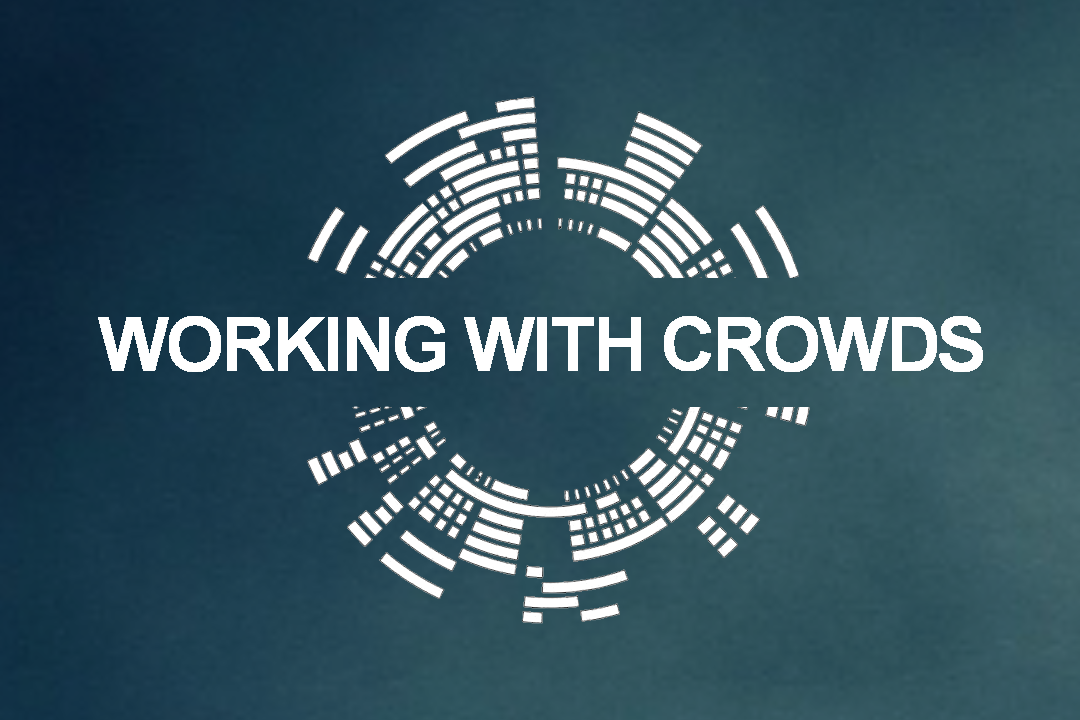To participate in crowd management, a basic understanding of crowds is required. This is not just the maths and physics of crowd movement and density; this is only half the story. How a crowd thinks, bond, understand and interact is the other half. By ignoring this part of understanding crowds can lead to failures and in some cases death.
Let us introduce you to some resources to peak your interest and hopefully lead you to explore this fascinating area. This is only the tip of the iceberg.
The power of the crowd | John Drury | TEDxSussexUniversity
Published on Sep 12, 2014
Crowd Psychology and Mass Gathering – Dr. John Drury, University of Sussex
Published on Apr 27, 2016
The Social Psychology of Crowds
Published on Nov 3, 2017
Clifford Stott Guest Lecture
Published on May 26, 2015
Prof. Steve Reicher lecture
Published on Mar 1, 2012
Collective Emotions / Session 3: Mass gatherings: emergence, dynamics and social control (Part 1)
Published on May 20, 2016
Collective Emotions / Session 3: Mass gatherings: emergence, dynamics and social control (Part 2)
Published on May 20, 2016
Collective Emotions / Session 4: The social psychology of social emotions
Published on May 20, 2016
Were to look
don’t panic! correcting myths about the crowd
I am a social psychologist who specialises in the study of crowd behaviour. I am interested in all situations when people come together in a crowd, either to protest, go to a sports match or festival, or if they get caught up in a mass emergency. I set this blog up to redress what I saw was a negative bias in the Press against crowds in general. Hope you like it!
http://dontpaniccorrectingmythsaboutthecrowd.blogspot.co.uk
- Cocking, C. (2011) Using VR technology in Teaching and Learning with 1st year Psychology Undergraduates. Investigations, 7 (1) 113-25.
- Cocking, C. (2009, Spring). Fostering deep learning through workshops: A re-design of a first-year Psychology Module. Investigations, 5(2).
- Cocking, C., & Drury, J. (2008). The mass psychology of disasters and emergency evacuations: A research report and implications for the Fire and Rescue Service. Fire Safety, Technology and Management, 10(2), 13-19.
- Cocking, C., & Drury, J. (2004) Generalization of efficacy as a function of collective action and intergroup relations: Involvement in an anti-roads struggle. Journal of Applied Social Psychology, 34(2), 417-444.
- Cocking, C., Drury, J., & Reicher, S. (2009). The psychology of crowd behaviour in fires: Implications for the emergency services. Irish Journal of Psychology, 30(1), 59-72.
- Drury, J., Cocking, C., Beale, J., Hanson, C., & Rapley, F. (2005). The phenomenology of empowerment in collective action. British Journal of Social Psychology, 44, 309-328.
- Drury, J., Cocking, C., & Reicher, S. (2009). Every one for themselves? Understanding how crowd solidarity can arise in an emergency: An interview study of disaster survivors. British Journal of Social Psychology, 48.
- Drury, J., Cocking, C., & Reicher, S. (2009). The nature of collective “resilience”: Survivor reactions to the July 7th (2005) London bombings. International Journal of Mass Emergencies and Disasters, 27(1), 66-95.
- Drury, J., Cocking, C., Reicher, S., Burton, A., Schofield, D., Hardwick, A., Graham, D., & Langston, P. (2009). Co-operation versus competition in a mass emergency evacuation: A new laboratory simulation and a new theoretical model. Behavior Research Methods, 41(3), 957-970.
the crowd
Brighton, University of Sussex, United KingdomI am a Social Psychologist at the University of Sussex. My research is on the crowd. Crowd events are a locus of both psychological determination and transformation. My research examines how social identities both shape participants’ actions but also change their sense of self, with important psychological and political consequences. I am also studying mass emergency behaviour, in order to develop a model of collective resilience – for example by exploring experiences of crowd solidarity behaviour in the London bombings of 2005. With David Novelli and Steve Reicher, I have been examining the way that one’s ‘tolerance’ for social density and ‘personal space’ varies in relation to whichever of one’s social identities is salient in relation to the identities of others present. Crowds are routinely pathologized and/or criminalized. Such constructions have important implications for policy and practice. In my research, I have sought to problematize such accounts and hence suggest a language for the crowd that recognizes and indeed celebrates its positive potential in the social world.
http://drury-sussex-the-crowd.blogspot.co.uk
School of Psychology
Crowds and Identities: John Drury’s Research Group
http://www.sussex.ac.uk/psychology/crowdsidentities/
- Alnabulsi, H., & Drury, J. (2014). Social identification moderates the effect of crowd density on safety at the Hajj. Proceedings of the National Academy of Sciences, 111(25), 9091-9096. doi: 10.1073/pnas.1404953111
- Ball, R., & Drury, J. (2012). Representing the riots: The (mis)use of statistics to sustain ideological explanation. Radical Statistics, 106, 4-21.
- Carter, H., Drury, J., Amlot, R., Rubin, G. J., & Williams, R. (2014). Effective responder communication improves efficiency and psychological outcomes in a mass decontamination field experiment: Implications for public behaviour in the event of a chemical incident. PLoS One 9(3): e89846. DOI: 10.1371/journal.pone.0089846
- Carter, H., Drury, J., Amlôt, R., Rubin, G. J., & Williams, R. (2015). Effective responder communication, perceived responder legitimacy and group identification predict public cooperation and compliance in a mass decontamination visualisation experiment. Journal of Applied Social Psychology. 45, 173–189. doi: 10.1111/jasp.12286
- Carter, H., Drury, J., Rubin, G. J., Williams, R., & Amlôt, R. (2015). Applying crowd psychology to develop recommendations for the management of mass decontamination. Health Security, 13(1), 45-53. doi:10.1089/hs.2014.0061
- Drury, J., Brown, R., González, R., & Miranda, D. (2015). Emergent social identity and observing social support predict social support provided by survivors in a disaster: Solidarity in the 2010 Chile earthquake. European Journal of Social Psychology doi: 10.1002/ejsp.2146
- Drury, J., Cocking, C., & Reicher, S. (2009). Everyone for themselves? A comparative study of crowd solidarity among emergency survivors. British Journal of Social Psychology, 48, 487-506.
- Drury, J., Cocking, C., & Reicher, S. (2009). The nature of collective resilience: Survivor reactions to the 2005 London bombings. International Journal of Mass Emergencies and Disasters, 27, 66-95.
- Drury, J., Novelli, D., & Stott, C. (2015). Managing to avert disaster: Explaining collective resilience at an outdoor music event. European Journal of Social Psychology, 4, 533–547. doi: 10.1002/ejsp.2108
- Drury, J., Novelli, D., & Stott, C. (2013). Psychological disaster myths in the perception and management of mass emergencies. Journal of Applied Social Psychology.43, 2259–2270. doi: 10.1111/jasp.12176
- Drury, J., & Reicher, S. (2009). Collective psychological empowerment as a model of social change: Researching crowds and power. Journal of Social Issues, 65, 707-725.
- Drury, J., & Reicher, S. (2005). Explaining enduring empowerment: A comparative study of collective action and psychological outcomes. European Journal of Social Psychology, 35, 35-58.
- Drury, J., Reicher, S., & Stott, C. (2003). Transforming the boundaries of collective identity: From the “local” anti-road campaign to “global” resistance? Social Movement Studies, 2, 191-212.
- Novelli, D., Drury, J., Reicher, S., & Stott, C. (2013). Crowdedness mediates the effect of social identification on positive emotion in a crowd: A survey of two crowd events. PLoS ONE 8(11): e78983. doi:10.1371/journal.pone.0078983
- Templeton, A., Drury, J., & Philippides, A. (2015). From mindless masses to small groups: Conceptualising collective behaviour in crowd modelling. Review of General Psychology. http://dx.doi.org/10.1037/gpr0000032
- Vezzali, L., Drury, J., Cadamuro, A., & Versari, A. (2015). Sharing distress increases helping and contact intentions via one-group representation and inclusion of the other in the self: Children’s prosocial behaviour after an earthquake. Group Processes and Intergroup Relations. doi: 10.1177/136843021559049
- Drury, J. (2014). Crowd psychology. In T. Teo (Ed.), Encyclopedia of critical psychology (pp. 341-344). New York: Springer.
- Drury, J. (2012). Collective resilience in mass emergencies and disasters: A social identity model. In J. Jetten, C. Haslam, & S. A. Haslam (Eds.), The social cure: Identity, health, and well-being (pp. 195-215). Hove, UK: Psychology Press.
- Drury, J., Evripidou, A., & Van Zomeren, M. (2015). Empowerment: The intersection of identity and power in collective action. In D. Sindic, M. Barreto, & R. Costa-Lopes (Eds.), Power and identity (pp. 94-116). Psychology Press.
The Psychology of Crowd Dynamics
Stephen Reicher
School of Psychology University of St. Andrews
http://citeseerx.ist.psu.edu/viewdoc/download?doi=10.1.1.592.7983&rep=rep1&type=pdf
DR CLIFFORD STOTT
http://enable-research.org/clifford-stott/
Journal Articles:
- Reicher, S., Stott, C., Drury, J., Adang, O., Cronin, P., & Livingstone, A. (2007). Knowledge-based public order policing: Principles and practice. Policing, 1, 403-415.
- Stott, C. J., Adang, O. M., Livingstone, A., & Schreiber, M. (2008). Tackling football hooliganism: A quantitative study of public order, policing and crowd psychology. Psychology Public Policy and Law, 14(2), 115-141.
- Stott, C. J., Adang, O. M., Livingstone, A., & Schreiber, M. (2007). Variability in the collective behaviour of England fans at Euro2004: Public order policing, social identity, intergroup dynamics and social change. European Journal of Social Psychology, 37, 75-100.
- Stott, C. J., & Drury, J. (2004). The importance of social structure and social interaction in stereotype consensus and content: Is the whole greater than the sum of its parts? European Journal of Social Psychology, 34, 11-23.
- Stott, C. J., & Drury, J. (2000). Crowds, context and identity: Dynamic categorization processes in the “poll tax riot.” Human Relations, 53, 247-273.
- Stott, C. J., Hutchison, P., & Drury, J. (2001). “Hooligans” abroad? Inter-group dynamics, social identity and participation in collective “disorder” at the 1998 World Cup finals. British Journal of Social Psychology, 40, 359-384.
- Stott, C. J., & Reicher, S. D. (1998). Crowd action as inter-group process: Introducing the police perspective. European Journal of Social Psychology, 28, 509-529.
- Stott, C. J., & Reicher, S. D. (1998). How conflict escalates: The inter-group dynamics of collective football crowd “violence.” Sociology, 32, 353-377.
- Stott, C., Livingstone, A., & Hoggett, J. (2008). Policing football crowds in England and Wales: A model of “good practice”? Policing and Society, 18, 258-281.
- Stott, C., & Pearson, G. (2006). Football banning orders proportionality and public order policing. Howard Journal of Criminal Justice, 45, 241-254.
Stephen David Reicher
Stephen Reicher is a Professor in the School of Psychology & Neuroscience at the University of St Andrews. His research interests focus on the issues of group behaviour and the individual-social relationship. More specifically, his recent research can be grouped into three areas. The first is an attempt to develop a model of crowd action that accounts for both social determination and social change. The second concerns the construction of social categories through language and action. The third concerns political rhetoric and mass mobilisation – especially around the issue of national identity. Currently, Professor Reicher is starting work on a Leverhulme funded project (jointly with Nick Hopkins of Lancaster University) looking at the impact of devolution on Scottish identity and social action in Scotland.
Anne Templeton, John Drury and Andrew Philippides
Walking together: behavioural signatures of psychological crowds
http://rsos.royalsocietypublishing.org/content/royopensci/5/7/180172.full.pdf
Research in crowd psychology has demonstrated key differences between the behaviour of physical crowds where members are in the same place at the same time, and the collective behaviour of psychological crowds where the entire crowd perceive themselves to be part of the same group through a shared social identity. As yet, no research has investigated the behavioural effects that a shared social identity has on crowd movement at a pedestrian level. To investigate the direction and extent to which social identity influences the movement of crowds, 280 trajectories were tracked as participants walked in one of two conditions: (1) a psychological crowd primed to share a social identity; (2) a naturally occurring physical crowd. Behaviour was compared both within and between the conditions. In comparison to the physical crowd, members of the psychological crowd (i) walked slower, (ii) walked further, and (iii) maintained closer proximity. In addition, pedestrians who had to manoeuvre around the psychological crowd behaved differently to pedestrians who had to manoeuvre past the naturally occurring crowd. We conclude that the behavioural differences between physical and psychological crowds must be taken into account when considering crowd behaviour in event safety management and computer models of crowds.





